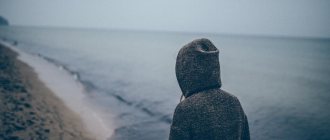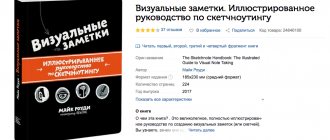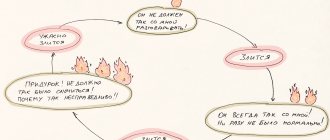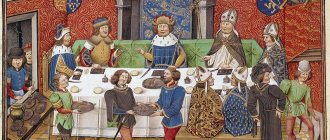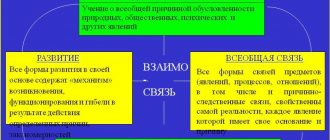Non-action among Taoists is one of the five main principles of thinking that can make life natural and calm. However, the principle has a very vague explanation, although it is practical. Non-action is the best way to interact with the surrounding reality; it is based on harmony. If you start using non-action constantly, then life itself will completely change, which will bring very good results.
“The perfect man, who is truly wise, commits no deeds. That is why it is the basis of the Universe."
The universe is not against us
To live according to the principles of wu wei, you must first understand your connection with everything in nature. And although we must have clear boundaries, like children who run and play outside the fence of the park, we must remain open and not afraid of vulnerability. Then we will be able to contemplate nature and feel the flow of world energy, and then we will learn to act in accordance with it.
Realizing that we don't have to fight the Universe, that it's not against us, will bring a sense of freedom.
Chinese wisdom about life
“If your heart is filled with love, then you cannot offend another person.”
“If you hate, it means you have been defeated” Confucius
“A wise man does not do to others what he does not want done to him” Confucius
“There is beauty in everything, but not everyone can see it” Confucius
“Your home is where your thoughts are calm”
“When doing good to people, do not demand gratitude from them. If you demand gratitude from them, your desire to do good will cause harm.”
“Don't speak unless it changes the silence for the better.”
“With money you can buy a watch, but not time”
“What happens happens at the right time.”
“A hut where they laugh is richer than a palace where they are bored.”
“Just because you tripped and fell doesn’t mean you’re going the wrong way.”
“Always look at things on the bright side, and if there are none, rub the dark ones until they shine.”
“The one who points out your shortcomings is not always your enemy; the one who talks about your merits is not always your friend.”
“Don’t be afraid to hesitate, be afraid to stop.”
“The temptation to give up will be especially strong shortly before victory.”
“The sovereign is like a boat, and the people are like water: they can carry you, but they can also drown you.”
“A great river flows quietly, a smart man does not raise his voice.”
“A noble man is serene in his soul. The lowly is always concerned” (Confucius).
“Live with peace. Come spring, and the flowers bloom themselves" .
If we know so little about life, what can we know about death? (Confucius).
With money you can buy a watch, but not time (Chinese folk wisdom).
A noble man knows his superiority, but avoids competition (Confucius).
Aimless movement
Nowadays, lack of purpose is considered unfitness for life. However, modern life can hardly be called harmonious.
The Chinese philosopher Chuang Tzu recommended a way of life that he called aimless movement. To explain, he drew an analogy with the activities of an artist or craftsman. A talented woodcarver or a skilled swimmer does not think or weigh the sequence of his actions. His skill has become so much a part of himself that he acts instinctively, spontaneously, without thinking about the reasons. This is precisely the state that philosophers sought to achieve with the help of wu wei.
Wuwei – creative non-action
Wuwei – creative non-action
Wuwei – creative inaction But in Taoism, unlike modern Western culture, inaction is one of the types of activity. If it is appropriate and aimed at creation, then it is much more useful than hasty actions and violence over events.
Wu wei is one of the basic principles of Taoist philosophy, one of its central concepts.
It does not mean that a person should lie and do nothing. It is about not interfering with the natural order of events, entering into the flow of life and moving in harmony with it. Without changing its flow, without trying to expand or narrow the banks, without becoming a dam. And by being part of this flow, we can be stronger than those who spend so much energy fighting it.
Simply put, by understanding the laws of life and nature, we are able to move at greater speed while exerting less force. Outwardly, this sometimes looks like inactivity, and some may call this process laziness. But that's not true.
- What does a cheetah do when it waits in the thickets for its prey to approach?
- How inactive is a frog lying in wait for a fly?
- What does a farmer do as he waits for the seeds he has planted to sprout?
All of them are involved in activity - waiting, preparing, studying surrounding circumstances. Will a cheetah be able to catch a gazelle if it rushes through the desert without a break? Will the bread sprout if the farmer digs up and buries the grains back to see if they have sprung? Their temporary inactivity is much more necessary and useful when it is timely and creative.
Wuwei – creative non-action
In Taoism it is believed that a person who has cognized the Tao is not subject to anything and is not dependent on anything. He can see and understand the depth of things. He is free, nothing gnaws at him, because he is involved in the flow of life, the universe helps him.
Why is it so difficult for us to accept this philosophy and teach how to do nothing correctly?
Because we don’t know how to stop in time, we don’t know when it’s time to tell ourselves “enough.” Wu wei is to remain silent when one should not speak. Leave a person alone when he is not in the mood for communication. Wait for the time and feel when your partner is ready to meet you halfway. Wait for a favorable time to make transactions.
We are too zealous, too diligent, too restless, too pushy, too pushy, too insensitive. We move forward, trying to break through barriers with our heads, without feeling the moments when the barriers are ready to part on their own.
A developing personality is characterized by the qualities of plasticity, fluidity, and adaptability. Wu Wei tells us that we must learn to be flexible, accept change, change with the world and not try to stop the irreversible. If we tried to resist the coming of night or fight the fall of autumn leaves, we would spend our whole lives in a pointless struggle. Instead, we constantly adapt to the world around us. We turn on the light when it gets dark, wrap ourselves in warm clothes when it gets cold.
But these examples are too obvious. There are many situations in our daily lives when it is important to understand: do we need to fight or do we need to retreat? We do not always know how to feel the difference between the first and second. Therefore, we often give up where we should act, and create a lot of noise where silence is needed.
Wuwei – creative non-action
Patience is not available to everyone; not everyone can learn to enter a state of peace when circumstances require it. We know only one side of life - physical action, identified with development and success.
But, if you have ever tried to feel and wait for the right moment, then you understand that waiting and contemplation is no less serious work than external labor visible to the eye.
There are many static exercises in karate, yoga and other eastern practices. When you need to stand for some time on half-bent legs, stretching out or taking an uncomfortable position. At these moments, certain muscle groups tense, and you may feel that such a static load is no easier than active exercises. On the contrary, it is heavier. Even a person involved in active sports will find it difficult to perform these exercises out of habit.
Wuwei – creative non-action
creative inaction
Wuwei is not only inaction, but also includes many different positions.
Thus, in Tao, the implementation of non-action is manifested in not being proud of accomplishments and not possessing what has been created. Do not strive too passionately to achieve your goal. You need to moderate your ardor, do the work without thinking about the end result. Go towards something without giving it too much importance.
Andy Urohol owns phrases that perfectly reveal the meaning of wu wei philosophy:
- You can achieve more power by keeping quiet.
- When you stop wanting something, you immediately get it.
Of course, inaction should not become your only activity if you are going to continue to live in this society on an equal basis with other people. Complete renunciation of desires and aspirations leads to the path of yogis and monks.
Wu Wei works great in combination with active actions.
It can be deciphered using the Yin-Yang sign. Where male energy is responsible for movement, and female energy is responsible for peace. With the right dosage, these two forces bring harmony in the soul and in life.
In conclusion, I will say that wu wei is a multifaceted concept, it has many nuances. A huge number of scientific works and books are dedicated to him. People spend years understanding the power of wu wei. To penetrate its depth, you need to work hard, but it is extremely interesting.
The main idea of Wu Wei is the ability to act without action and create without unnecessary effort.
Meditative contemplation
Consider the Taoist practice of contemplation. To comprehend the harmony of the world order, you need to focus on your inner world and observe the flow and change of thoughts and images. Observe how they appear and disappear, your sensations from this process. Gradually you will realize that the cause of all thoughts is the activity of the mind.
It is your mind that creates thoughts that are the source of all problems. Tao suggests freeing your mind from thoughts, and then you will notice that your problems have disappeared along with them! When you have mastered this practice, move on to the next one - stopping the occurrence of thoughts. How to do it? You must not allow thoughts to arise. You have already studied the nature of mental activity and understand how thoughts appear in your head - just don’t let them appear.
When you free your mind from the flow of thoughts, you will experience inner peace. In this state, the world is perceived completely differently, all emotions are balanced, and a feeling of harmony appears. Inner harmony manifested itself through stopping the chaotic flow of thoughts.
Do I need to read any mantras during this practice or focus on something? No, inner contemplation takes place in complete silence. This practice can be done anywhere and in any position - sitting, lying down, while walking. Over time, you will get used to this practice and will feel the need to free your mind from the chaos of thoughts and images.
Features of the teaching
The date of origin of Taoism is approximately the fifth century BC. The concept combined the features of religion and philosophy. Tao jiao is treatises, the study of existence, gaining knowledge about the Universe, and Tao jiao is belief in higher powers and carrying out spiritual practice. But the division is practically imperceptible, so Taoism is considered as a set of aspects. There is no God in the teaching, there is only Tao. This term refers to the Universe, the path to its achievement and self-improvement. The goal of any monk who professes this philosophy is to merge with the Tao.
Confucianism has several similar definitions . But in this teaching, Tao is called the rules of humanism and moral principles. A person must improve: study exact sciences, music, writing, and various sports.
Taoism views nature as the beginning of being . Adhering to this philosophy, a person must obey natural laws, forgetting about his own “I”.
There is no need to interfere with the measured flow of life; it is better to submit to it.
Stages of development
In the first century BC. e. Schools of Taoism began to appear. Over time, they changed, and some merged into one institution. Main institutions:
- School of Heavenly Mentors;
- Quanzhen;
- Maoshan;
- Lingbao.
The School of Heavenly Masters, or “Five Buckets of Rice,” was the first to teach the basics of Taoism. It was founded by patriarch and mountain hermit Zhang Daoling. Over time, it was divided into southern and northern. But then the establishment became united again, its name changed to Zhenyi.
In the southern regions, in the times after the dominance of the Mongol tribes, the Quanzhen school opened. Maoshan or Shangqin existed until the 14th century. Here students practiced communication with spirits and higher powers. Lingbao focused on meditation; it was more like a Buddhist school.
In the fifth century, the number of adherents of Taoism increased: they were joined by hermits who dreamed of longevity. The doctrine at this time turns into religion, and its goal becomes the desire for immortality. At that time there were only 250 treatises with basic definitions, principles and concepts. And today there are more than 1,500 books and essays.
Taoism is not considered a traditional religion. It is based on the principle of equality of humanity. Thanks to this, philosophy was studied by different categories of people. But in the Middle Ages, monasteries were built where only enlightened monks were allowed.
In the 17th century, the Qing dynasty ruled, which encouraged the persecution of philosophy. The rulers considered the teaching to be pseudoscience, so they ordered to burn books, destroy monasteries, and punish supporters of Taoism. Rehabilitation began only in the 60s of the last century. But modern philosophy is different. It was based on meditation and magical rituals.
The teaching became famous in the West thanks to its unique martial arts, breathing exercises, and Feng Shui.
